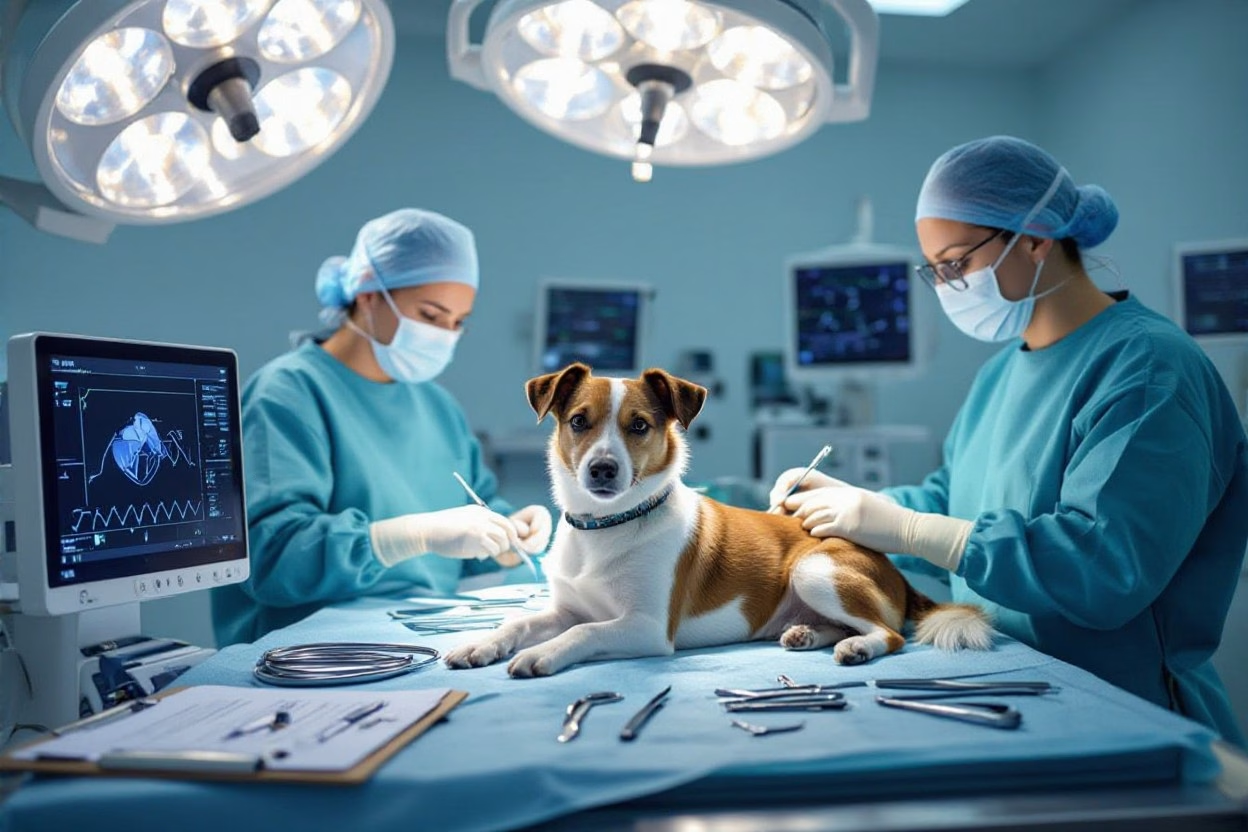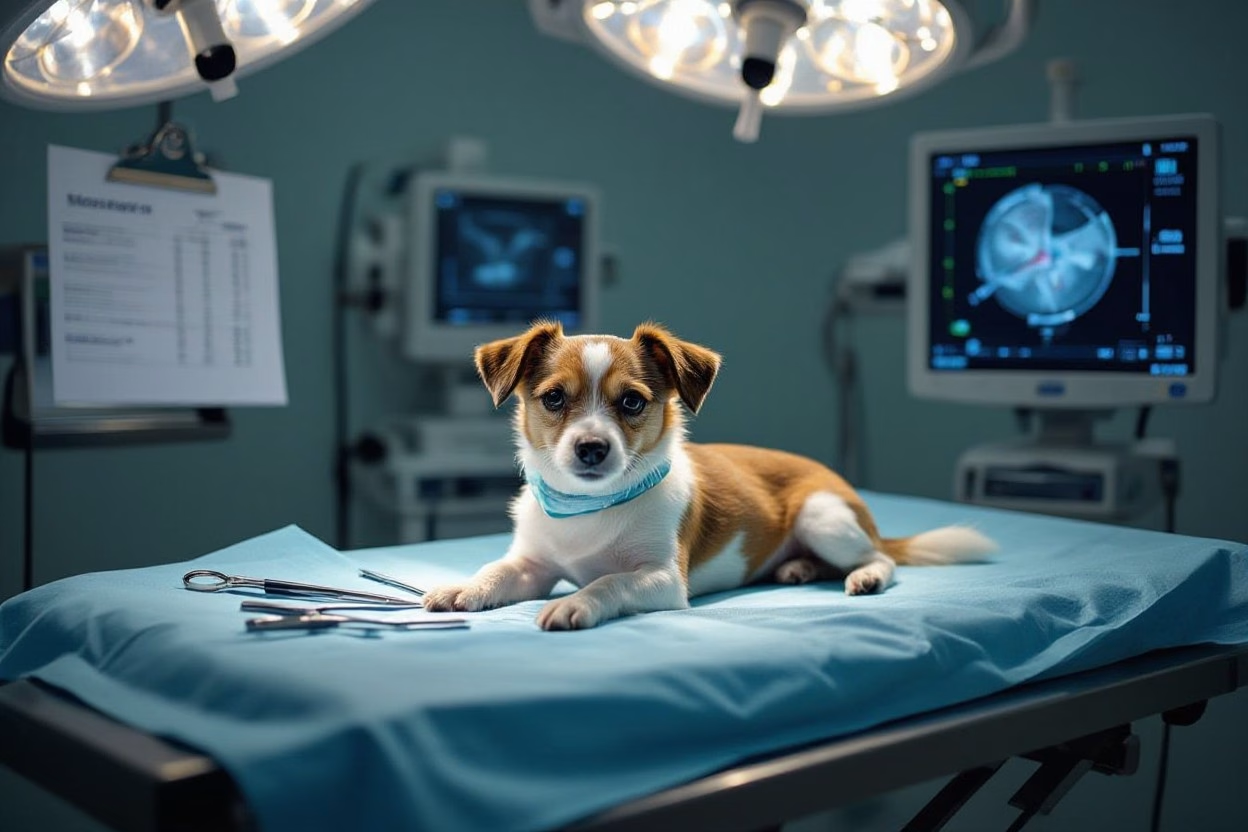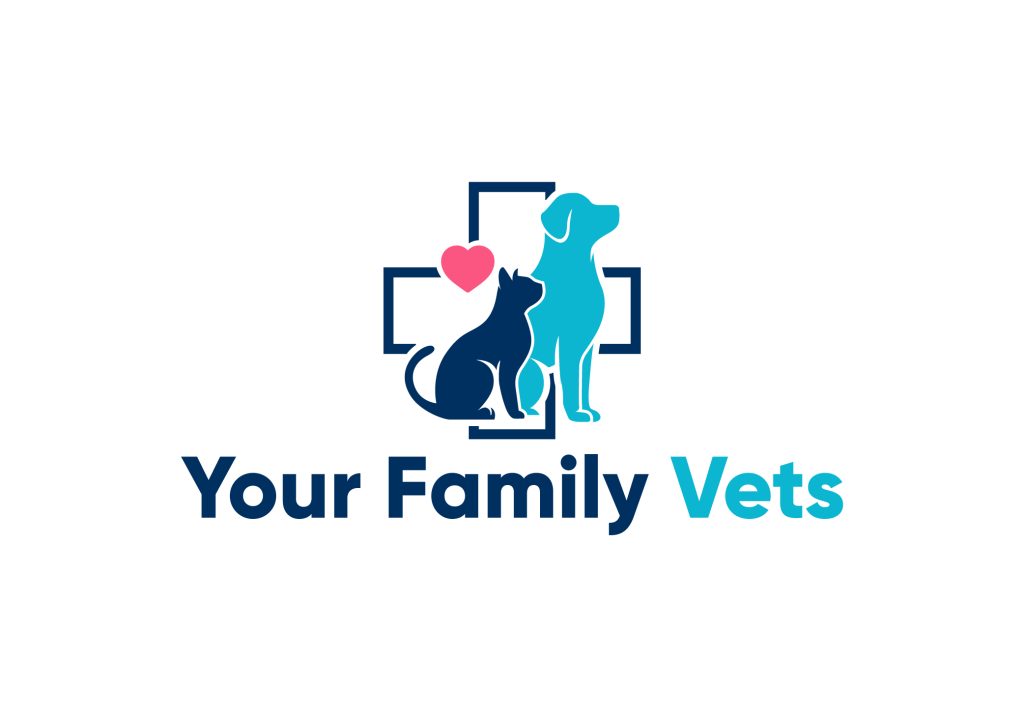Most owners weighing spay options should know that keyhole (laparoscopic) spaying is a minimally invasive alternative to traditional spay, using small incisions and a camera so your dog typically has less pain and faster recovery; however, it carries higher upfront costs and the general anaesthetic and surgical risks still apply. This guide explains the procedure, compares benefits and risks, outlines UK costs, and helps you decide whether this option at YorVet in Harrogate or York suits your dog.
Unlocking the Mystery of Spaying: A Modern Approach
What this means for your dog
You’ll see that keyhole (laparoscopic) spaying uses two 0.5–1cm incisions and usually removes only the ovaries, giving most dogs a 5–7 day recovery with lower post‑op pain versus traditional spays (10–14 days). Risks are reduced, but the method can be unsuitable for very small dogs or those with abdominal abnormalities. Typical UK costs at YorVet are £850–£1,200; contact us in Harrogate or York to discuss laparoscopic dog spay cost and whether this dog spaying option suits your pet.

The Mechanics of Laparoscopic Spaying: A Surgical Revolution
Embracing Minimally Invasive Techniques
Two 0.5–1cm ports and a high-definition laparoscope give surgeons a clear view of the abdomen while CO2 insufflation (typically 8–12 mmHg) creates working space; many procedures finish in 20–60 minutes. You’ll see smaller incisions, less post-op pain and a typical dog spay recovery time of 5–7 days versus 10–14 after open surgery. General anaesthesia risks still apply and there remains a small risk of bleeding or organ injury, so specialist training and equipment are vital.
Distinct Approaches: Ovariectomy vs. Ovariohysterectomy
Ovariectomy removes only the ovaries, cutting hormonal cycles and greatly lowering pyometra and pregnancy risk, while ovariohysterectomy removes ovaries plus uterus for added reassurance against uterine disease. You’ll find many UK clinics prefer laparoscopic ovariectomy for shorter anaesthetic time and less internal handling, but some cases still warrant uterus removal.
For a medium dog, laparoscopic ovariectomy often shortens anaesthesia by 10–30 minutes compared with open ovariohysterectomy and reduces incision-related wound complications by over 50% in published series; discuss with your vet which option fits your dog’s age, breed and medical history, and contact YorVet in Harrogate or York for a tailored assessment and quote.
Laparoscopic Spaying Unveiled: What to Expect
Expect general anaesthesia, two tiny 0.5–1cm ports and a camera-guided approach that usually takes 30–60 minutes. Pain after keyhole spaying is typically lower, with most dogs showing normal activity within 5–7 days versus 10–14 days after open surgery. You’ll see smaller scars, less infection risk, and a slightly higher upfront cost—typical UK ranges are £850–£1,200; contact YorVet in Harrogate or York for a tailored quote.
The Technique: A Window into Minimally Invasive Surgery
Surgeons create a small pneumoperitoneum (usually 8–12 mmHg) then insert a telescope and one or two 0.5–1cm ports to manipulate vessels and tissues with long instruments. Visual magnification lets your vet cauterise and seal ovarian vessels precisely, reducing internal handling and haemorrhage. For laparoscopic spaying dogs this means less analgesia after surgery and faster mobilisation compared with traditional open procedures.
The Procedure: Ovariectomy vs. Ovariohysterectomy
Ovariectomy removes the ovaries only; ovariohysterectomy removes ovaries and uterus. Laparoscopic approaches in the UK most commonly perform ovariectomy because it shortens anaesthetic time and lowers surgical trauma, yet both stop oestrus and prevent pregnancy. Vets choose ovariohysterectomy if there’s suspected uterine disease—existing pyometra or abnormal uterine tissue alters the decision.
At YorVet, a healthy adult bitch undergoing laparoscopic ovariectomy typically spends 30–45 minutes under anaesthesia with discharge the same day; traditional OHE can take 45–90 minutes and extends dog spay recovery time to 10–14 days. You should discuss age, breeding plans, and any ultrasound findings—if the uterus shows cysts, haematometra or pyometra, your vet may recommend ovariohysterectomy despite the longer recovery and slightly higher cost.

The Upsides of Keyhole Spaying: Beyond the Surface
Keyhole spaying (laparoscopic spaying dogs) delivers more than smaller scars: you get reduced tissue trauma, quicker return to normal activity and a lower chance of wound-related problems. Typical incisions are just 0.5–1cm, recovery commonly falls within 5–7 days, and many owners in the UK report fewer follow-up visits compared with traditional spay. If you’re weighing dog spaying options UK, factor in the slightly higher laparoscopic dog spay cost against the tangible welfare and recovery benefits for your pet.
Quicker Recovery Times: What to Expect
Most dogs show noticeable improvement within 48–72 hours and resume light activity in under a week; full healing often aligns with the 5–7 day dog spay recovery time typical for keyhole procedures versus 10–14 days after an open spay. You’ll usually manage activity with short leash walks and brief rest, and many active breeds return to baseline energy faster, reducing lost exercise and rehabbing time.
Reduced Pain and Complications: A Look at the Benefits
Laparoscopic spays minimise internal handling of organs, so you can expect lower post-op pain and a reduced need for extended analgesia—many cases need only 24–72 hours of short-course pain relief. Smaller wounds also mean lower infection and dehiscence risk, which is especially valuable for large, active dogs or those prone to licking or wound breakdown.
Clinical reports and practice audits show measurable differences: surgeons frequently note lower pain scores on standard scales and shorter analgesic courses after keyhole procedures, with many clinics observing up to a 50% reduction in additional pain-med requests versus traditional spays. Wound complication rates drop because two tiny ports heal faster than a single 5–10cm incision, lowering the chance of infection or suture failure. You should still anticipate routine anaesthetic monitoring and a brief post-op check, but overall the combination of smaller incisions, less organ manipulation and quicker mobilisation explains why keyhole neutering dogs is becoming the preferred option for owners prioritising comfort and fast recovery.
The Bright Side: Advantages of Keyhole Spaying
With keyhole spaying (laparoscopic spaying), your dog benefits from two 0.5–1cm incisions, minimal internal handling, and a significantly lower infection risk than traditional spays. You’ll likely see shorter hospital stays and faster return to normal activity, making this an attractive dog spaying option in the UK—especially for active, medium-to-large breeds. Many owners in Harrogate and York choose this for the reduced trauma and predictable recovery profile.
Recovery Revolution: Faster Healing for Your Dog
Recovery after keyhole spaying typically runs about 5–7 days versus 10–14 days for traditional spays, letting your dog resume light walks sooner and lowering wound complication rates. Smaller wounds mean fewer dressing changes and a reduced chance of self-trauma, so you’ll usually need less intensive aftercare and fewer follow-up visits—benefits that matter for busy owners and sporting dogs.
Pain Management: A Softer Touch for Post-Op Care
Laparoscopic spaying reduces nociceptive input, so your dog often needs a shorter analgesic course; vets commonly use a multimodal protocol combining local blocks, NSAIDs and short-acting opioids as needed. You’ll typically manage pain at home with oral NSAIDs for around 48–72 hours, with lower overall opioid use and fewer sedation-related side effects compared with traditional open surgery.
Local anaesthetic techniques (incisional infiltration or intraperitoneal lidocaine), pre-op gabapentin and intra-op opioids cut immediate pain and speed mobilisation. Standard discharge plans often include a 2–3 day NSAID course (carprofen or meloxicam) plus guidance to watch for vomiting, diarrhoea or loss of appetite, and to contact your vet if you spot swelling or abnormal bleeding. YorVet can tailor a pain plan for your dog based on size, age and medical history.
Considerations and Limitations: Weighing the Risks
Suitable Candidates for Keyhole Spaying
Ideal candidates are healthy dogs assessed as ASA I–II, typically medium to large breeds and dogs aged from about 6 months to a few years, where minimal scarring and normal abdominal anatomy are expected. You should expect exclusions for dogs with previous major abdominal surgery, active pyometra, significant obesity or coagulopathies, and some very small breeds under ~5 kg where instrument size or space is limiting. Pre-op bloodwork and a physical exam determine if keyhole spaying is medically appropriate for your pet.
Equipment and Cost Implications
Laparoscopic spays require a camera tower, insufflator, specialised trocars and graspers, plus single-use consumables—all of which explain the higher upfront fee versus traditional spay. Typical UK practice costs include capital kit priced from roughly £20,000–£60,000 and per-case disposables of about £30–£150, which contributes to a laparoscopic dog spay cost of around £850–£1,200 at clinics like YorVet in Harrogate and York.
Amortising capital equipment shows why the price stays elevated: a £40,000 laparoscopic setup spread over 1,000 procedures adds ~£40 per case, while disposables (trocars, retrieval bags, drapes) add another £30–£150. Expect initial theatre times to be longer during the learning curve—sometimes 45–90 minutes—dropping to 20–45 minutes with experience, which lowers anaesthetic risk and staffing costs over time. Training and CPD for surgeons (commonly £500–£2,000) and maintenance contracts also factor into fees, but reduced post-op complications, shorter hospital stays and lower analgesic use often balance the higher upfront expense; contact YorVet for a tailored quote for your dog in Harrogate or York.

Considerations and Caution: The Downsides of Laparoscopic Spaying
Laparoscopic spaying reduces trauma but brings trade-offs: specialist kit and training raise the upfront price, and there’s a small risk of conversion to an open procedure if you have dense adhesions or uncontrollable bleeding. General anaesthesia risks still apply, particularly in older or systemically unwell dogs, and some vets may not offer the service locally, meaning travel or referral. Expect a thorough pre-op assessment to confirm your dog is a good candidate before you commit.
Who Should Avoid It? Assessing Candidate Suitability
Very small dogs (typically under ~5 kg), dogs with suspected uterine disease, extensive prior abdominal surgery or dense adhesions, clotting disorders, and dogs with advanced heart or respiratory disease may be poor candidates. Pregnant bitches in late gestation and severely obese dogs can increase anaesthetic and technical risk. Your vet will use ASA grading, ultrasound findings and surgical history to decide whether a traditional spay is safer for your dog.
The Cost of Expertise: Price vs. Value of Specialized Care
In the UK, laparoscopic dog spay cost at specialist clinics typically runs from £850–£1,200, compared with roughly £300–£600 for a traditional spay — around 1.5–3× more. That premium covers experienced surgeons, laparoscopic equipment and enhanced monitoring. For example, a 25 kg Labrador booked at YorVet often falls near the middle of that range. You pay more up front, but many owners find the faster recovery and lower wound-complication rates justify the cost.
Specialist fees fund capital costs (laparoscopes, insufflators, reusable instruments), formal laparoscopic training and longer theatre time; those investments reduce incision size, cut infection and wound breakdown rates, and shorten recovery to about 5–7 days vs 10–14 days for traditional spays. Fewer rechecks and less analgesia can offset some expense; contact YorVet in Harrogate or York for a tailored quote based on your dog’s size and health.

Comparing Approaches: Keyhole vs. Traditional Spay
Quick Comparison
| Keyhole (Laparoscopic) Spay | Traditional Spay (Open Ovariohysterectomy) |
|---|---|
| Incisions: 0.5–1cm (2 small ports) | Incision: 5–10cm (single abdominal cut) |
| Pain level: Lower due to minimal tissue handling | Pain level: Higher; more soft-tissue trauma |
| Recovery time: 5–7 days for most dogs | Recovery time: 10–14 days typical |
| Internal trauma: Minimal (ovaries removed, less organ manipulation) | Internal trauma: Moderate; uterus often removed |
| Cost (UK): Generally higher — about £850–£1,200 at YorVet | Cost (UK): Lower upfront (often several hundred pounds) |
| Uterus removed? Usually no (ovariectomy) | Uterus removed? Usually yes (ovariohysterectomy) |
| Suitability: Best for ASA I–II, medium/large active dogs; small breeds may be less suitable | Suitability: Widely applicable; useful when uterine disease suspected |
| Conversion risk: Low but present; conversion to open surgery possible if complications arise | Conversion: N/A (already open approach) |
A Side-by-Side Analysis of Features
You’ll notice keyhole spaying gives smaller incisions (0.5–1cm), reduced post-op pain and a typical recovery of 5–7 days, while traditional spays mean a larger 5–10cm incision and 10–14 day recovery. At YorVet in Harrogate/York, laparoscopic dog spay cost usually runs £850–£1,200 depending on size and health; traditional options are cheaper upfront but often involve longer downtime and higher wound-complication rates.
Popular Misconceptions Explored
Some owners think keyhole spaying is experimental or doesn’t stop heat — both are incorrect: laparoscopic ovariectomy removes the ovaries, so your dog will stop coming into season; the technique has been routine in many UK practices for years. Concerns that leaving the uterus raises pyometra risk are unfounded after ovariectomy, and anaesthetic risk remains comparable between approaches.
Surgeon experience matters: conversion to an open procedure or unexpected bleeding can occur but is a low, single-digit percentage in experienced teams. You should weigh the higher laparoscopic cost against benefits like lower infection and wound breakdown rates, especially for active or large-breed dogs. Contact YorVet at our Harrogate or York clinics to assess your dog’s suitability and get a tailored laparoscopic dog spay cost estimate.

Comparing the Methods: Keyhole vs. Traditional Spaying
| Keyhole Spay | Traditional Spay |
|---|---|
| Incisions: 0.5–1cm ports (2) | Incision: 5–10cm single incision |
| Pain & recovery: Lower pain; 5–7 days | Pain & recovery: Higher pain; 10–14 days |
| Internal trauma: Minimal organ handling | Moderate internal handling |
| Cost (UK): Typically £850–£1,200 | Usually lower (often £250–£600) |
| Procedure: Ovariectomy (ovaries removed) | Often ovariohysterectomy (ovaries + uterus) |
| Best for ASA I–II, active medium/large dogs; specialist training required | Preferred if uterine disease, very small breeds, or extensive scarring |
Side-by-Side Analysis: Differentiating Features
Two 0.5–1cm ports in laparoscopic spays give you smaller scars and less tissue trauma compared with a single 5–10cm open incision; clinically this translates to shorter recovery (5–7 days), reduced analgesia needs and lower infection rates, while traditional spays remain the go-to for uterine disease or complicated abdomen cases where full access is needed.
Understanding Health Implications: What’s Best for Your Dog
Removing the ovaries (keyhole ovariectomy) removes hormonal drivers of heat and greatly reduces the risk of pyometra, though ovariohysterectomy eliminates the uterus entirely; ASA I–II dogs without abdominal pathology are ideal for keyhole, whereas very small breeds, prior abdominal surgery or suspected uterine disease often steer vets toward traditional spays—your vet will assess by size, age and medical history.
Studies and clinical experience show laparoscopic spays have lower post-op pain scores and quicker return to normal activity; expect conversion to open surgery in a small percentage (often 1–5%) if visibility or complications arise. Contact YorVet in Harrogate or York for a tailored assessment and cost estimate for your dog’s spay options.

Understanding the Costs: What to Expect in the UK
Expect the laparoscopic dog spay cost in the UK to reflect clinic location, your dog’s size/ASA grade and whether pre-op tests are needed; at YorVet prices typically sit around £850–£1,200. Emergency cases or additional imaging push costs higher, while routine, healthy dogs usually fall near the lower end. Factor in that general anaesthesia and specialist equipment are the main drivers of price.
Range of Expenses: Breaking Down the Price Tag
Typical line items include consultation and pre-op bloods (£40–£120), anaesthesia and monitoring, theatre time, laparoscopic consumables and surgeon fee; a medium Labrador example at YorVet often totals about £950. Post-op checks and basic pain relief are usually included, but extra costs can arise for overnight stays, unexpected complications or additional imaging such as ultrasound or X‑rays.
What’s Included in the Laparoscopic Package
Packages generally cover pre-op assessment, general anaesthesia, laparoscopy equipment use, anaesthetic monitoring, IV fluids, intra- and post-op analgesia and a follow-up check. Your dog will be operated on by a trained team using minimally invasive technique to reduce wound size and speed recovery compared with traditional spay.
More detail: monitoring typically includes ECG, pulse oximetry and blood pressure; pain control often combines local anaesthetic infiltration, NSAID and short-course opioids where needed. Suture removal is uncommon with keyhole incisions; recovery time commonly sits at 5–7 days. Contact YorVet in Harrogate or York for a tailored quote and suitability assessment for your dog.
Navigating Costs: What to Expect for Laparoscopic Spaying in the UK
Expect typical quotes for laparoscopic dog spay cost at YorVet to sit between £850–£1,200, with variation by size, ASA status and any pre-op tests. You’ll pay for the theatre time, an experienced surgeon, and general anaesthesia monitoring; emergency interventions or complications can add several hundred pounds. Perceiving some clinics list a base price while omitting routine bloods or follow-ups can change the true outlay.
Breakdown of Expenses: What’s Included in Your Investment
Standard fees usually cover consultation, general anaesthesia, surgical time, intra-op monitoring, and at least one post-op check; post-op pain relief is normally included. Typical add-ons: pre-op bloods (£40–£120), ECG or imaging (£40–£150), and overnight stay (£50–£150) if needed. Smaller dogs may be cheaper; complex cases cost more due to time and specialist equipment. Perceiving the headline price can omit these predictable extras.
Financial Factors: Understanding Pet Insurance Coverage
Many UK insurers treat neutering as elective and exclude it, though some policies offer a routine care add-on (£30–£70/yr) or will cover surgical complications under medical sections after waiting periods. You should check excesses, policy limits and whether pre-existing conditions are excluded; claims for complications often require full documentation from your vet. Perceiving that a policy “covers surgery” may still leave you liable for routine procedure costs.
- keyhole spaying
- laparoscopic spaying dogs
- dog spaying options UK
- laparoscopic dog spay cost
- keyhole neutering dogs
- traditional vs keyhole spay
- dog spay recovery time
- spay dog Harrogate / York
Perceiving you should get a written estimate detailing inclusions and likely extras before booking.
Insurers commonly pay for unexpected post-op complications—re-operations, infection treatment or extended hospitalisation—subject to policy limits and excess; for example, a complication claim might cover £500–£2,000 of additional surgery, but only after a 14–30 day waiting period and minus your excess. You should keep all records and ask YorVet for itemised invoices if you intend to claim. Perceiving reviewing policy wording beforehand prevents surprise denials.
- keyhole spaying
- laparoscopic spaying dogs
- laparoscopic dog spay cost
- dog spaying options UK
- spay dog Harrogate / York
Perceiving contacting YorVet for a tailored quote and an itemised cost breakdown will help you compare real costs and insurance cover.
Final Thoughts
If you want a spay option that usually gives smaller incisions, less pain and a typical recovery time of 5–7 days, laparoscopic (keyhole) spaying is worth considering; studies and our Harrogate/York experience show fewer wound complications and quicker return to activity compared with traditional spay, though the procedure commonly costs £850–£1,200 and may not suit very small or medically complex dogs. Talk to YorVet for a tailored assessment and quote for your dog.
Final Thoughts
Key takeaways
For many owners, the trade-off is a higher upfront fee—typically £850–£1,200—for a procedure that uses 0.5–1cm incisions, suits healthy ASA I–II dogs, and often delivers a 5–7 day recovery versus 10–14 days after traditional spay. You reduce post-op pain and wound complications, especially in active or large breeds; if your dog fits the criteria, contact YorVet in Harrogate or York for a tailored assessment.
FAQ
Q: What is keyhole (laparoscopic) spaying and how does it differ from a traditional spay?
A: Keyhole spaying (laparoscopic spaying dogs) is a minimally invasive procedure using two very small incisions and a camera to remove the ovaries (ovariectomy) in most cases, rather than a single large incision and often removal of the uterus (ovariohysterectomy) as in a traditional spay. The surgeon works with specialized instruments while viewing a magnified image on a screen, which reduces internal handling of organs and the size of external wounds compared with traditional vs keyhole spay approaches.
Q: What are the main benefits and what is the typical dog spay recovery time after a keyhole spay?
A: Benefits of keyhole spaying include smaller incisions and less visible scarring, reduced post-op pain, lower infection risk, faster recovery and quicker return to activity — dog spay recovery time is commonly 5–7 days for most dogs versus 10–14 days after a traditional spay. Other advantages for owners include shorter hospital stays and often lower analgesic needs; this approach is particularly well suited to active, medium-to-large breeds and dogs prone to wound complications.
Q: Are there any downsides or risks to keyhole neutering dogs?
A: Downsides include that it is not suitable for every patient (very small breeds, complex abdominal conditions or previous abdominal surgery can rule it out), it requires specialist equipment and training, and the laparoscopic dog spay cost is typically higher than a conventional spay. General anaesthesia and surgical risks still apply, and conversion to an open procedure can be necessary in rare cases. When performed by an experienced team, laparoscopic spaying is very safe.
Q: How much does laparoscopic spaying cost in the UK and what does that price usually include?
A: Laparoscopic spaying cost in the UK typically ranges from £850 to £1,200, depending on your dog’s size, health and any pre-op tests required. That price usually covers pre-op assessment, general anaesthesia, the surgery by a trained team, post-op pain relief, and a follow-up check. Some insurance policies may contribute — check your provider. Compared with traditional spay prices, keyhole spay is generally higher up front but often offers faster recovery and lower wound complication risk.
Q: How can I tell if keyhole spaying is right for my dog and how do I arrange one at YorVet?
A: Your vet will assess suitability based on age, size, breed and medical history; ideal candidates are active, medium-to-large dogs and those with higher wound-risk profiles, while very small dogs or animals with abdominal abnormalities may be better suited to a different approach. To find out if laparoscopic spaying is appropriate for your pet or to get a tailored quote (laparoscopic dog spay cost varies by case), contact YorVet for a consultation at our Harrogate or York clinics — we can assess your dog and explain options, timings and expected recovery.
